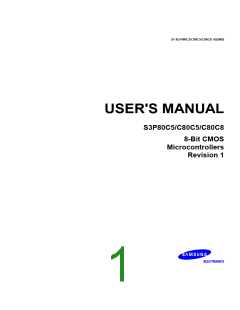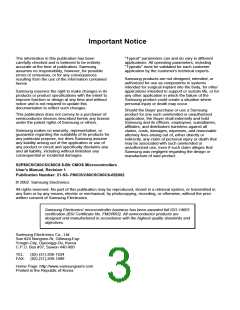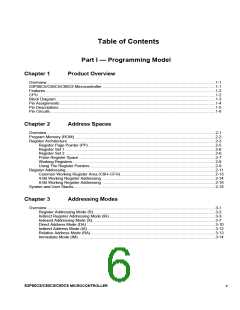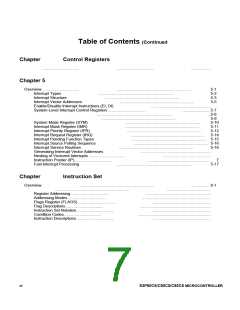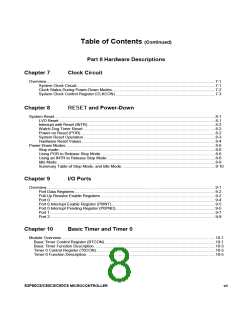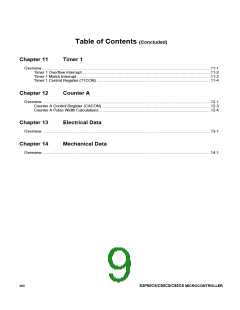Table of Contents (Continued
Chapter
Control Registers
................................
................................
.................
Chapter 5
Overview ................................
Interrupt Types
................................................................
................................................................
................................................................
5-1
5-2
5-3
5-5
Interrupt Structure
Interrupt Vector Addresses
Enable/Disable Interrupt Instructions (EI, DI)
................................................................
...................................................
System-Level Interrupt Control Registers ................................
................................................................
................................................................
................................................................
........................5-7
..5-8
5-9
5-10
5-11
5-12
System Mode Register (SYM)
Interrupt Mask Register (IMR)
Interrupt Priority Register (IPR)
Interrupt Request Register (IRQ)
Interrupt Pending Function Types
Interrupt Source Polling Sequence
Interrupt Service Routines
................................................................
................................................................
................................................................ 5-14
................................................................ 5-15
................................................................ 5-16
................................................................
5-16
Generating Interrupt Vector Addresses
Nesting of Vectored Interrupts ................................
Instruction Pointer (IP)................................
............................................................
.........................................
.....................................................
7
Fast Interrupt Processing
................................................................
5-17
Chapter
Instruction Set
Overview
................................................................
................................................................
Register Addressing ................................
.................6-1
......................................
........................................................
...........................................................
..................................................
Addressing Modes................................
Flags Register (FLAGS) ................................
Flag Descriptions................................
Instruction Set Notation ................................
Condition Codes................................
.............................................................
...................................................
..............................................................
...................................................
Instruction Descriptions ................................
vi
S3P80C5/C80C5/C80C8 MICROCONTROLLER
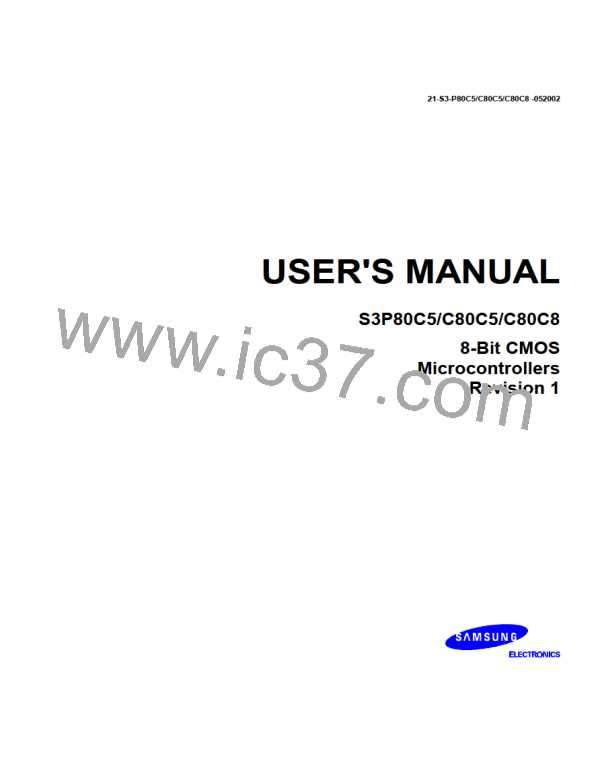
 SAMSUNG [ SAMSUNG ]
SAMSUNG [ SAMSUNG ]
